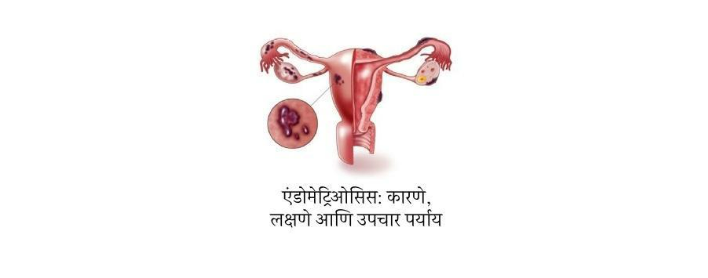If you’ve just received a semen analysis report that says “abnormal sperm morphology” or “teratozoospermia,” it’s natural to feel worried. You may even be thinking: Does this mean I can’t have children?
The good news is that you are not alone—this is a very common finding, and it does not mean fatherhood is impossible. Many men with abnormal sperm morphology go on to become fathers, sometimes naturally and often with a little medical support.
This guide is for you. We’ll explain what sperm morphology actually means, why abnormalities happen, and—most importantly—the effective treatments and solutions available to help you achieve your dream of parenthood.
- What is “Normal” Sperm Morphology?
- What Causes Abnormal Sperm Morphology?
- How Does Teratozoospermia Affect Fertility?
- How to Improve Sperm Morphology: Treatments and Solutions
- Medical Intervention and ART (Assisted Reproductive Technology)
- Your Path Forward with Xenith IVF
- Frequently Asked Questions (FAQ)
What is “Normal” Sperm Morphology?
Sperm morphology simply refers to the shape and size of your sperm. Each sperm cell has three important parts:
- The Head – Think of it as a helmet carrying your most precious cargo: DNA. A smooth, oval head is considered normal. If the head is too large, too small, double, or oddly shaped, the sperm may have trouble reaching or entering the egg.
- The Midpiece – This is the “engine” that connects the head and tail. It’s packed with energy-producing mitochondria. Abnormalities here may reduce energy supply.
- The Tail – Like a motorboat propeller, the tail pushes the sperm forward. A bent, coiled, or multiple tail makes swimming harder.

When a lab checks sperm under the microscope, they often use Kruger’s strict criteria. These are very high standards—so much so that it’s normal for the majority of sperm to be labeled as “abnormal.” Even if only 4–5% of sperm look normal, pregnancy can still happen. In other words, don’t panic if your report shows a low percentage.
What Causes Abnormal Sperm Morphology?
You may be wondering why your sperm look different than “normal.” There are several possible reasons, and knowing them can help guide treatment.
Lifestyle and Environmental Factors
- Diet and Obesity – Extra weight or poor nutrition can disrupt sperm production.
- Smoking and Alcohol – Both can damage sperm at the cellular level.
- Heat Exposure – Hot tubs, saunas, or tight underwear can raise testicular temperature.
- Toxins – Pesticides, heavy metals, or certain workplace chemicals may affect sperm.

Medical Conditions
- Varicocele – Enlarged veins in the scrotum can overheat the testicles and damage sperm.
- Infections – Even past infections can affect sperm health.
- Hormonal Imbalances – Low testosterone or thyroid issues can play a role.
Genetic Traits
Sometimes, abnormal morphology is linked to inherited genetic factors. Even then, effective fertility treatments are available to help overcome these challenges.
How Does Teratozoospermia Affect Fertility?
Here’s what really matters: Can your sperm still fertilize an egg?
- An abnormally shaped sperm may struggle to swim effectively or penetrate the egg’s outer layer.
- But remember—your semen sample contains millions of sperm. Even if most look abnormal, some will still be normal and capable of fertilizing an egg.
- Natural conception is still possible, but it might take longer. That’s where medical treatments can make the process easier and more reliable.
How to Improve Sperm Morphology: Treatments and Solutions
This is the part most men want to know: What can I do about it? The answer is encouraging—there are clear steps you can take.
Lifestyle and Dietary Changes
You have more control than you think. Even small changes can help improve sperm health over time:
- Eat a balanced diet rich in antioxidants (fruits, vegetables, whole grains, nuts, seeds).
- Maintain a healthy weight through regular exercise.
- Quit smoking and reduce alcohol as much as possible.
- Avoid excessive heat—wear looser underwear and limit hot tub/sauna use.
- Reduce toxin exposure if your work or environment involves chemicals.
Example Day’s Diet for Better Sperm Health
- Breakfast: Oats with nuts and berries, plus a boiled egg or milk.
- Lunch: Whole wheat roti with dal/chickpeas, mixed vegetables, and a salad with tomatoes and spinach.
- Snack: A handful of seeds (pumpkin/sunflower) or sprouts salad.
- Dinner: Grilled chicken or paneer with quinoa/millet and steamed veggies.

Medical Intervention and ART (Assisted Reproductive Technology)
If sperm shape issues are severe, fertility specialists have powerful tools to help.
- IVF with ICSI (Intracytoplasmic Sperm Injection) is the gold standard for treating teratozoospermia. In this procedure, an embryologist selects a single, healthy-looking sperm and injects it directly into the egg. This completely bypasses the sperm’s need to swim or break into the egg on its own.
- With ICSI, the concern about abnormal sperm morphology becomes much less important—success rates are very high, and many couples conceive this way.

Your Path Forward with Xenith IVF
A diagnosis of teratozoospermia may feel discouraging at first, but it’s not a dead end. With today’s advanced fertility treatments, the shape of your sperm is no longer a major barrier to fatherhood.
At Xenith IVF, we specialize in treating all forms of male infertility, including sperm morphology issues. Our experts will explain your semen analysis in clear language, guide you through lifestyle improvements, and, if needed, design a personalized treatment plan using techniques like ICSI.
Don’t let a confusing report take away your hope. With the right support, the path to parenthood is still very much open. Our experts specialize in treating all forms of male infertility, including teratozoospermia. Contact Xenith IVF for a clear explanation and a personalized treatment plan.
Frequently Asked Questions (FAQ)
While it is more difficult, it is possible for an abnormally shaped sperm to fertilize an egg. However, the primary challenges are the sperm’s ability to reach the egg and penetrate its outer shell. Furthermore, some defects, particularly in the head, may be associated with chromosomal issues, which can increase the risk of miscarriage.
The success of IVF-ICSI is very high for couples dealing with teratozoospermia because the ICSI procedure bypasses the need for the sperm to fertilize the egg on its own. The embryologist selects the best available sperm to inject directly into the egg. Success rates are generally comparable to IVF cycles for other infertility factors.
There is no single “magic” diet, but a diet rich in antioxidants is highly recommended. This includes plenty of fruits, vegetables, whole grains, and healthy fats. Foods high in zinc (like nuts and beans), selenium (like eggs and chicken), and lycopene (like tomatoes) are believed to be particularly beneficial for sperm health.




